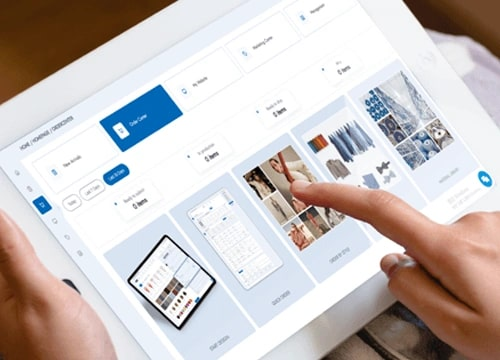
Getting started is often the hardest part of anything. We tend to overthink, overcomplicate, and hold ourselves back—especially when we don’t have a clear, actionable plan. But if you’ve just typed “how to start a small clothing business from home” into a search bar and landed on this article—congratulations. You’ve already taken the first step toward building something of your own.
Starting a small-scale clothing business from home isn’t as hard as it used to be. In today’s digital world, it's more accessible than ever. This blog post will walk you through the entire process step by step, helping you turn your idea into a real, working business—right from your living room.
The foundation of any successful clothing brand lies in a clear niche and a well-understood target audience. You can’t market to everyone—so don’t try. Instead, identify what makes your style or message unique.
Start by asking yourself:
l What kind of clothing do I want to create? (e.g., sustainable basics, streetwear, plus-size fashion, kidswear, cultural designs)
l Who is my ideal customer? Age, values, lifestyle, and spending habits?
l What problem does my clothing solve?
Research fashion trends on Pinterest, Instagram, and TikTok. Use tools like Google Trends or AnswerThePublic to see what people are searching for. Validate your ideas with friends, forums, or small test sales on platforms like Etsy.

Once your niche is defined, select a business model that aligns with your skills, budget, and growth goals:
l Print-on-Demand (POD)
Ideal for graphic tees, hoodies, or athleisure. You upload designs to a platform (like Printful or Printify), and products are printed and shipped only when ordered. No inventory, low startup cost.
l Handmade
Perfect for artisans or sewing hobbyists. You create each item by hand, offering exclusivity and craftsmanship—but production time is limited by your personal capacity.
l Private Label
This involves working with manufacturers to produce custom designs under your own brand. Higher control over quality, but requires investment in inventory and product development.
l Dropshipping
You handle the branding and marketing, while a supplier ships directly to your customer. Low risk, but less control over quality and delivery times.
Each option has trade-offs between cost, control, and scalability. Choose a model you can realistically manage and grow into.
Your business plan is your roadmap—and a critical tool if you ever seek funding or partnerships. Even if you're starting solo, a clear plan keeps you focused.
l Brand Vision & Mission: Define what your brand stands for and how it will make a difference.
l Market Analysis: Understand your competition and your customer’s unmet needs.
l Product Line: Detail what items you’ll offer and how they support your niche.
l Marketing Strategy: Describe your customer acquisition plan through channels like social media, content, email, and collaborations.
l Financials: Estimate startup costs (equipment, website, marketing), profit margins, and
pricing structure.
Even a simple spreadsheet and 3-page PDF can serve as a functional starter plan.
A well-organized, dedicated workspace is key to productivity—especially when your home is also your headquarters.
l Designated area: Whether it’s a spare bedroom or sectioned-off corner, having a "business-only" zone keeps you focused.
l Tools & Equipment: Sewing machines, cutting tables, printers, labelers, mannequins, lighting kits (for product photography).
l Storage: Use clear bins, garment racks, drawer organizers, and label makers to keep your materials and products in order.
Invest in ergonomic seating and adequate lighting. Clutter can kill creativity and slow down your workflow.

People buy brands, not just clothes. Your brand identity is how you communicate your values, vibe, and style.
l Name: It should be unique, easy to spell, and evoke your aesthetic.
l Logo & Colors: A clean, scalable logo and a consistent color palette make your brand recognizable across platforms.
l Voice: Think about how your brand "talks" in captions, emails, and product descriptions—is it casual, polished, cheeky, or inspiring?
Tip: Create a brand style guide, even if it's just one page. It helps you stay consistent.
Now it’s time to bring your designs to life.
l Design Tools: Use Adobe Illustrator, Canva, or Procreate to sketch concepts. If you're less tech-savvy, even paper drawings are a good start.
l Fabric & Materials: Search online platforms (like Alibaba, Fabric.com) or local textile markets. Look for certifications like GOTS (for organic fabrics) if you're marketing sustainability.
l Sampling & Testing: Always order product samples. Test for comfort, durability, and shrinkage. Ask friends or local communities for honest feedback before launching.
If you’re outsourcing production, an easier route is to look for made-to-measure (MTM) manufacturers. Partnering with experienced, well-established custom apparel suppliers can help reduce costs and simplify the process. Use platforms like Maker’s Row or reach out directly to garment manufacturers such as Kutetailor.
Your website is your digital storefront—make it count.
n Shopify: Powerful, user-friendly, and built for e-commerce.
n Etsy: Excellent for handmade or niche items with built-in traffic.
n WooCommerce: Great if you already use WordPress and want full control.
n Use clean layouts with strong product images and easy navigation.
n Include important trust signals—SSL certificate, return policy, and customer reviews.
n Optimize for mobile, as over 60% of shoppers browse on phones.
Home / About Us / Shop / Size Guide / FAQ / Shipping & Returns / Contact
Integrate Google Analytics and basic SEO to track performance and improve search visibility.

If your focus is on made-to-measure online or personalized apparel, platforms like Kutetailor offer tailored solutions that go beyond traditional e-commerce.
Kutetailor provides:
l A visual product configuration system for MTM suits and garments
l Customizable storefront templates or seamless integration with your existing site
l Real-time inventory and order tracking
l Built-in marketing and analytics tools to grow your brand faster
It’s a powerful option for entrepreneurs building fashion businesses around fit, personalization, or small-batch customization.
You may have amazing designs and a well-organized home-based store—but without smart marketing, your products might never reach your audience. Here’s how to promote your small clothing business with practical, low-cost, and beginner-friendly strategies:
l Instagram is perfect for visual storytelling—use it to showcase new drops, behind-the-scenes looks, and customer photos.
l TikTok is ideal for viral short-form content—post styling tips, “how it’s made” clips, and trend challenges.
(2) Post Consistently:
l Use free tools like Later or Planoly to schedule posts in advance. Aim for 3–5 posts per week.
l Include a mix of content: product showcases, founder stories, tips, user-generated content, and lifestyle imagery.
(3) Engage with Your Audience:
l Reply to comments, thank customers in DMs, and reshare tagged content to build a loyal community.
(4) Use Hashtags Strategically:
l Combine niche hashtags (#ethicalfashionbrand, #madeinUSAstyle) with trending ones (#ootd, #fashionreels) for wider reach.
(1) Start Collecting Emails Early:
Use free pop-ups on your website to invite visitors to join your list with an incentive—such as “Get 10% off your first order.”
(2) Send Regular Campaigns:
l Weekly or bi-weekly emails can include:
l Product restocks and new launches
l Styling inspiration
l Customer features or testimonials
l Limited-time offers or seasonal sales
(3) Create a Welcome Flow:
l Set up an automated welcome email for new subscribers, introducing your brand and encouraging a first purchase.
(1) Launch a Blog on Your Website:
Writing just 1 article per week can dramatically boost your visibility on search engines over time.
(2) Basic SEO Tips:
l Include keywords like “affordable women’s fashion,” “sustainable streetwear,” or “handmade dresses USA.”
l Use headings, meta descriptions, and alt text for images.
l Optimize the keywords of your entire website or store, and use correct and searchable keywords.
l Start with Micro-Influencers (1K–20K followers):
These creators often have high engagement rates and are more accessible. DM or email with a clear pitch: introduce your brand, explain why you admire their content, and offer to send free products in exchange for a review or tag.
l Track ROI with Custom Discount Codes or UTM Links
Consider Affiliate Marketing

(1) Test Facebook/Instagram Ads:
n Start with a small budget ($5–10/day) targeting lookalike audiences or website visitors.
n Run ads promoting your bestsellers, email sign-up offer, or seasonal discounts.
(2) Use Pinterest Ads for Evergreen Traffic:
Fashion performs well on Pinterest. Boost pins featuring outfit inspiration or seasonal guides.
Behind every stylish storefront is a solid operational system.
l Order Fulfillment: Decide whether you’ll ship daily, batch orders weekly, or use a third-party fulfillment service. Pack orders with care—branded packaging elevates customer experience.
l Inventory: Track your stock in Excel, Airtable, or inventory software like Zoho Inventory or Craftybase.
l Finances: Open a separate business bank account. Use tools like Wave or QuickBooks for invoicing and expense tracking.
Ensure you understand local tax laws and register your business if required.
Once you gain traction, you’ll need to plan for what’s next.
l Add new SKUs: Based on customer feedback, seasonal needs, or trending categories.
l Sell in new places: Think Amazon, local boutiques, or weekend pop-up markets.
l Automate: Use tools to auto-send emails, track abandoned carts, and schedule content.
l Hire: Eventually, you may need help with customer service, order packing, or marketing.
Stay flexible—fashion evolves fast, and so should your brand.
Launching a home-based clothing business is more than a side project—it’s a chance to build something uniquely yours. With smart planning, a strong brand identity, and consistent execution, you can turn your creativity into a profitable venture. Start small, learn fast, and don’t be afraid to experiment.
Remember: the best time to start was yesterday. The second-best time is today.